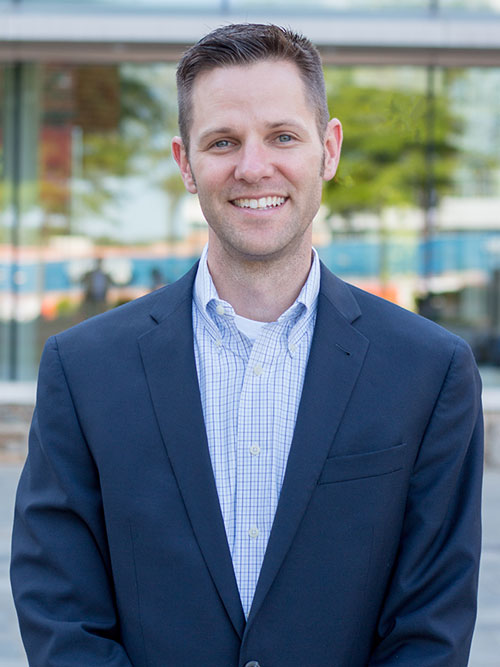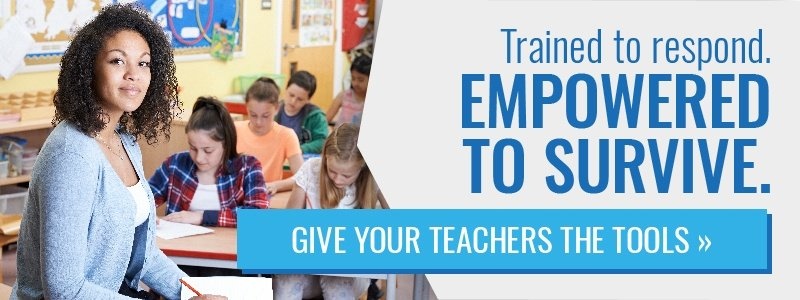 If you work for a school in the state of South Carolina, or you have a child who attends one, you are probably well aware of the law that was passed last year, requiring all public schools to hold two active shooter drills per year.
If you work for a school in the state of South Carolina, or you have a child who attends one, you are probably well aware of the law that was passed last year, requiring all public schools to hold two active shooter drills per year.
Doing the drill is not up for debate, but every public school has some flexibility in the approach it chooses to take in fulfilling the requirement. This flexibility is meant to ensure that every school selects an active shooter training program that best meets its unique needs, but for school principals and other decision makers, that's a lot of responsibility to take on.
What if the drill isn't helpful? What if it scares students and staff? What if it's an absolute mess? What if...
These are certainly valid concerns, but they're also concerns that can and should be addressed. Let's discuss the characteristics that your school's active shooter training and drills should follow in order to be helpful and also provide a positive experience for everyone involved.
Keep the drill developmentally appropriate
Keep in mind that your active shooter drill is designed for students, not just adults. The format, concepts, and steps should be simple and straightforward enough for children and teens to understand. If you are practicing these drills with elementary students, the training should be focused toward staff with the intention of protecting the students. In other words, an elementary student's role in an active shooter drill will be minimal.
Consider partnering with a mental health professional to ensure that your training process and/or materials are appropriate for students with disabilities.
Plan out the logistics
Active shooter drills are not like fire drills; students have not been practicing them every year since kindergarten. For any students coming from charter schools or other private schools, this may be the first active shooter drill they've ever done. So, don't expect everyone to fall into line when you announce the drill. You will likely need a team of trained individuals to give instructions and guide your students and staff through the drill.
Accommodate physical and psychological needs
One of the main reasons that you must prepare logistically for your school's active shooter drill is to ensure the physical and psychological safety of your students and staff.
Physical Needs
Do you have students or staff with unique physical needs? Don't ponder that for too long; the answer is almost certainly yes. Instead, determine what types of physical needs exist and figure out how you can and should meet those needs during training. Give special consideration to those with disabilities and health concerns, but also plan for standard things, such as having water bottles on hand, providing bathroom breaks and addressing traffic coordination if any part of the training will be happening outside the school building.
Mental Health
While you must take physical safety into account, remember that the purpose of an active shooter drill is to provide knowledge, teach specific skills, and give participants the opportunity to develop those skills. To protect mental health during that process, consider involving a professional team of active shooter response instructors, law enforcement officials, or school mental health professionals. These qualified individuals can engage in the planning phase of the drill as well as assist with monitoring and executing the drill.
Another key to protecting and promoting mental health through the active training process is to take time to assess and process the drill when it's over. Consider holding a speaking event or form breakout groups where students can freely discuss their thoughts and feelings about the drill, including what they learned, what was impactful to them, what was confusing, etc. When students restate in their own words what they learned from the drill, they will have better recall when it really counts.
Another benefit of forming discussion groups is that the feedback offered will provide school leadership with valuable insight on how to better approach an active shooter drill next time.
Ensure that your active shooter training is SLED-compliant
SLED will evaluate active shooter training for schools upon request. Another way to ensure that your training and drills meet the appropriate requirements is to rely on a resource that's compliant with SLED. ProActive Response Group is that resource. Our Active Shooter Response Training is the only training of its kind in South Carolina that has been recognized by SLED as compliant. Contact us today to learn more!
.png?width=499&height=133&name=Logo-menu%20(1).png)



